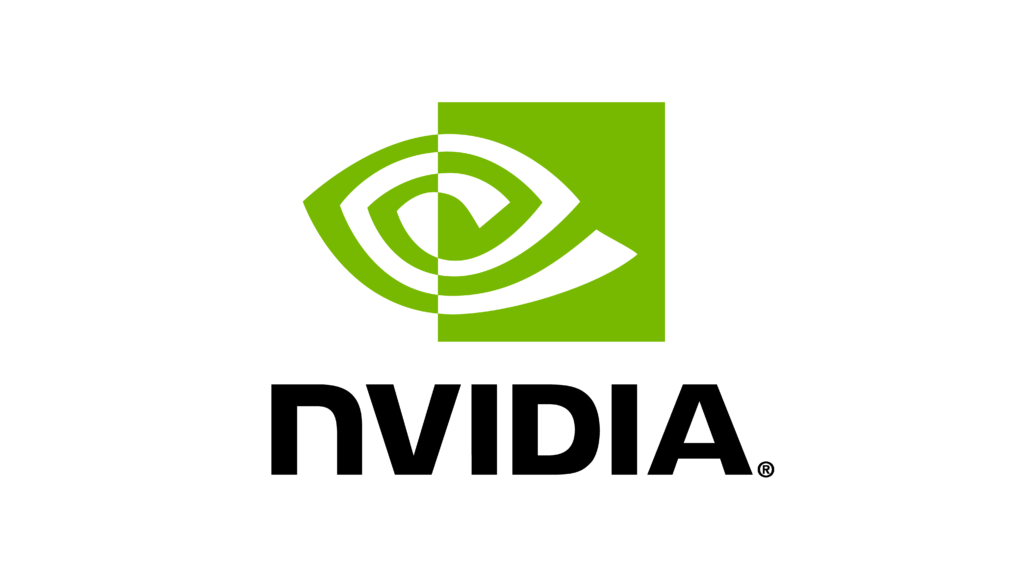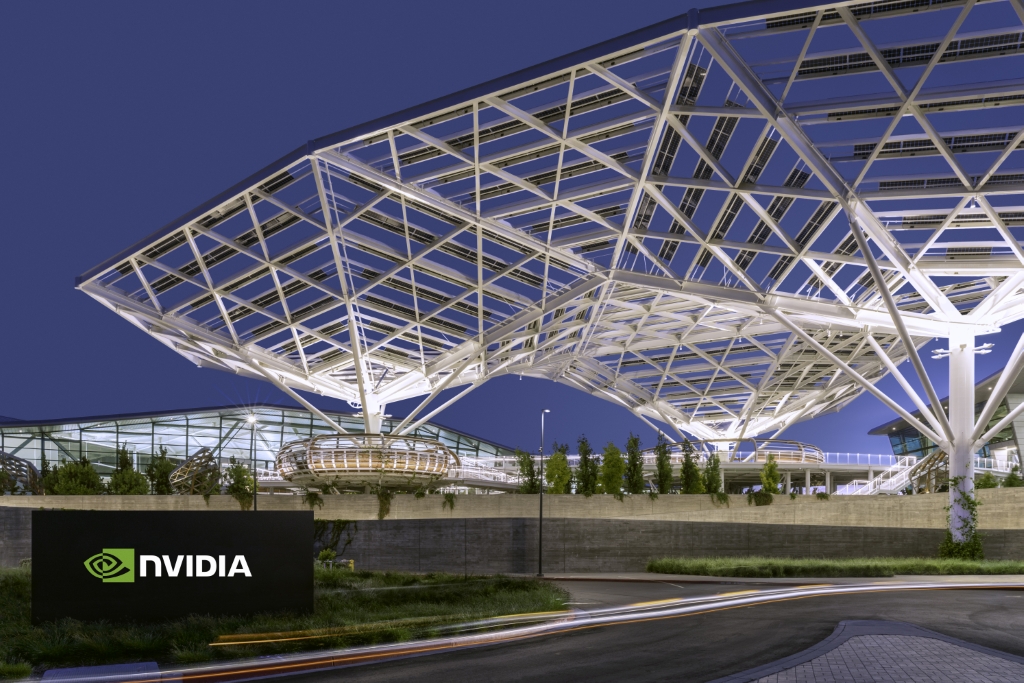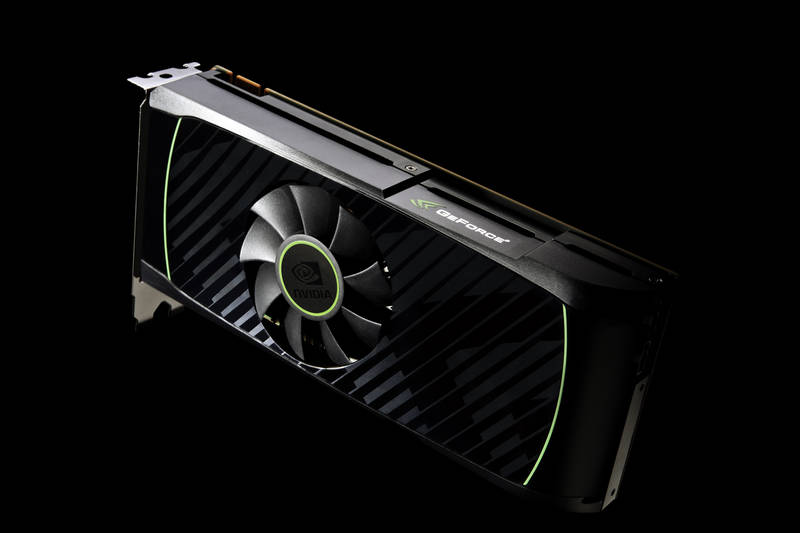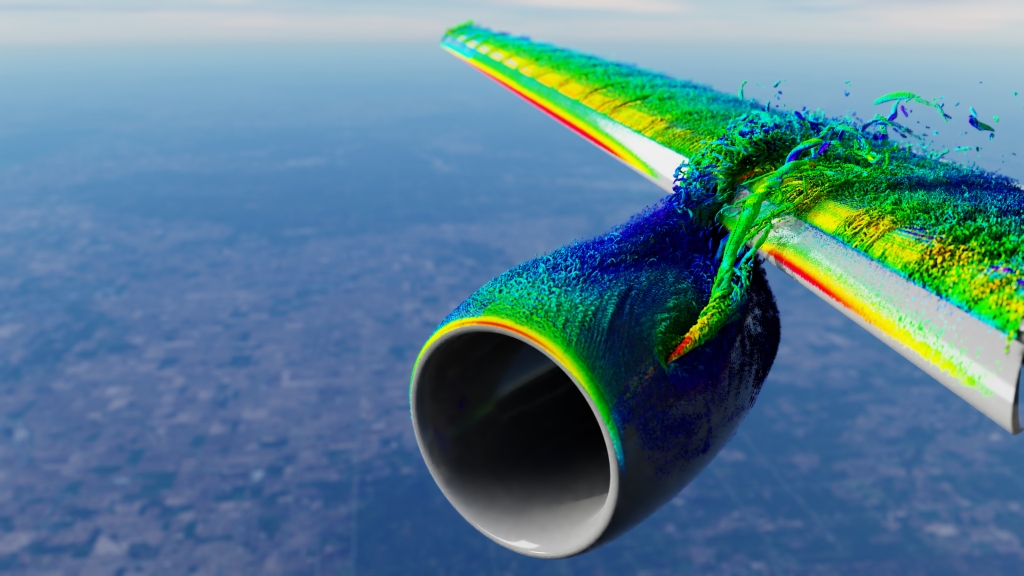Nvidia’s Open Source Shift: Empowering the Computer Industry with PhysX and Flow

Nvidia, a dominant force in computer graphics, created the notable PhysX and Flow technologies, which have significantly shaped physics and fluid dynamics simulations. PhysX serves as a robust physics engine, leveraging GPU parallel processing for realistic, real-time effects and complex virtual interactions. Complementing this, Flow is a specialized library designed for the high-fidelity, real-time simulation of combustible fluids like fire and smoke.
In a significant strategic shift in April 2025, Nvidia made the source code for both PhysX and Flow fully open source under the permissive BSD-3 license, moving away from a proprietary model towards community collaboration. While the PhysX SDK had been partially open since December 2018, this announcement crucially included the previously proprietary GPU simulation kernel source code, completing its open-sourcing. Flow’s complete GPU compute shader implementation was also released concurrently. This report explores the potential impact of this decision on technology adoption, development methods, and innovation in gaming, simulation, and visual effects.
TL;DR:
Nvidia has fully open-sourced its PhysX and Flow technologies, marking a strategic shift toward community-driven development in physics and fluid simulation.
Nvidia’s decision to fully open source PhysX and Flow, after a period of partial openness starting in 2018, represents a deliberate strategic adjustment. This move was likely influenced by the growing complexity of maintaining proprietary software amidst rapid hardware advancements and the rising importance of open-source solutions. Factors such as addressing compatibility issues with newer hardware and recognizing the potential for community-driven innovation to extend the technologies’ relevance probably spurred the full release of the PhysX GPU kernel and the entire Flow library in 2025.

The timing of this full open-sourcing is particularly noteworthy, coinciding with the discontinuation of 32-bit CUDA support in Nvidia’s RTX 50 series GPUs. This strongly suggests a proactive measure to empower the developer and modding communities. With 32-bit CUDA support removed, hardware acceleration for PhysX in older 32-bit games is impacted on new hardware. By releasing the GPU kernel source, Nvidia provides the necessary tools for the community to potentially develop solutions like compatibility layers or wrappers, ensuring these older titles remain performant on modern systems and possibly mitigating negative user reactions to the removed functionality.
Deconstructing the Technologies: PhysX and Flow
Nvidia PhysX: Powering Realistic Physics
TL;DR: PhysX is a mature, GPU-accelerated physics engine that now empowers developers with full access to simulate complex physical behaviors in games and simulations.
Nvidia PhysX is a robust physics engine middleware SDK developed by Nvidia, now available as fully open source under the BSD-3 license. Functioning as an intermediary layer between a game or application and the underlying hardware, PhysX offers pre-built functionalities for simulating a wide array of physical phenomena. This significantly reduces the time and effort required for developers to implement their own physics code from scratch.
Its capabilities are comprehensive, encompassing:
- Rigid body dynamics – simulating the motion and interaction of solid, non-deformable objects
- Soft body dynamics – simulating deformable objects such as cloth, flesh, and rubber
- Particle effects – generating visual effects like explosions, smoke, and debris
- Ragdoll physics – creating realistic character death animations
- Vehicle dynamics – simulating the movement and handling of vehicles
- Volumetric fluid simulation – although Nvidia’s Flow library is more specifically designed for this purpose
PhysX excels at handling intricate interactions and collisions between various simulated elements within a virtual environment.
The technology’s history traces back to NovodeX, a physics simulation engine created by the Swiss company NovodeX AG, which was acquired by Ageia in 2004. Ageia subsequently developed PhysX hardware, known as Physics Processing Units (PPUs), to accelerate physics calculations.
Nvidia acquired Ageia in 2008 and integrated PhysX acceleration into its GeForce line of graphics cards, eventually phasing out the need for dedicated PPUs. Nvidia’s strategic focus shifted toward leveraging the general-purpose GPU (GPGPU) capabilities of its graphics cards, utilizing its CUDA architecture to perform the parallel computations essential for physics simulations.

PhysX has achieved widespread adoption and is deeply integrated into numerous popular game engines, including Unreal Engine (version 3 and later) and Unity, making it readily accessible to a vast number of game developers. It has been implemented in a multitude of well-known games across diverse genres.
It is important to note that while many games incorporate the PhysX engine, the option for hardware acceleration often depended on the user’s system configuration, with CPU-based physics simulation serving as a common alternative. The PhysX SDK’s cross-platform availability—supporting a wide range of operating systems and gaming consoles—underscores its versatility and broad applicability.
The evolution of PhysX from a dedicated hardware solution in the form of PPUs to a software solution optimized for general-purpose GPUs reflects a broader industry trend: seeking efficiency and cost-effectiveness by utilizing existing hardware infrastructure for a variety of computational tasks beyond traditional graphics rendering.
Ageia’s initial concept of a dedicated physics card was innovative but faced limitations in terms of cost and widespread adoption. Nvidia’s acquisition and integration of PhysX into mainstream GPUs via CUDA provided a more scalable and accessible solution, capitalizing on the increasing power and parallel processing capabilities of graphics cards already present in most gaming PCs.
Furthermore, PhysX’s deep integration within leading game engines like Unreal Engine and Unity has significantly contributed to its widespread adoption. By embedding PhysX support directly into these popular engines, developers can easily incorporate sophisticated physics simulations without the need for complex in-house development or the less seamless integration of third-party solutions. This has established PhysX as a fundamental technology for many physics-intensive games.
Nvidia Flow: Simulating the Unseen
TL;DR: Flow simulates real-time fire and smoke using an adaptive sparse voxel grid, and its open sourcing unlocks advanced visual effects for indie developers and researchers.
Nvidia Flow is a specialized library within Nvidia’s GameWorks suite, specifically designed for the real-time simulation and rendering of combustible fluids, with a primary focus on fire and smoke effects. Unlike the broader physics capabilities of PhysX, Flow is tailored to handle the intricate dynamics of fluid behavior in gaseous states—particularly those involving combustion.

Its functionalities include simulating key properties such as temperature, fuel density, and smoke concentration within a defined three-dimensional space. This allows developers to create visually rich and dynamic fire and smoke effects.
Simulation Features and Realism
Flow accounts for phenomena like:
- Buoyancy – the tendency of hotter, less dense fluids to rise
- Expansion – the increase in volume due to heat
- Self-shadowing – smoke casting shadows on itself, enhancing visual realism
A core feature of Flow is its use of an adaptive sparse voxel grid—a technique that optimizes computational resources by focusing calculations only on active regions of the simulation. This grid dynamically adjusts its resolution based on the needs of the simulation, significantly improving performance.
Interactivity and Real-Time Integration
Flow supports real-time collision detection with both static and dynamic objects, enabling realistic interaction between fluids and the virtual environment. It also allows the use of real-time fuel emitters, making simulations highly interactive and suitable for dynamic gameplay scenarios. Applications of Flow have primarily been within video games to enhance visual fidelity and create immersive atmospheric effects.
Hardware and Implementation
Historically, Flow has been implemented using DirectX 11 and has often been optimized for—and sometimes required—an Nvidia GPU for hardware acceleration. It especially leverages Volume Tiled Resources, when available, to improve efficiency and realism.
Optimization via Sparse Voxel Grids
Flow’s reliance on a dynamic sparse voxel grid is a prime example of advanced optimization for real-time fluid simulation. Simulating high-resolution fluid dynamics across an entire scene can be prohibitively resource-intensive. By adapting the simulation grid to only active areas (such as where fire and smoke are), Flow reduces computational load while maintaining impressive visual quality.This enables developers to create detailed effects without compromising the game’s overall performance.
Potential Beyond Gaming
While Flow is best known for its use in gaming, the core principles and algorithms it employs—particularly those related to fluid dynamics and combustion—have broader applications. These include:
- Simulating airflow in architectural design for better ventilation
- Modeling smoke dispersion for emergency planning and safety protocols
- Visualizing complex fluid flows in scientific research
The decision to make Flow open source significantly expands its potential, inviting innovation in fields far beyond game development.
| Feature | PhysX | Flow |
|---|---|---|
| Primary Function | Physics Engine | Fluid & Combustion Simulation |
| Key Capabilities | Rigid body dynamics, soft body dynamics, particle effects, etc. 12 | Fire, smoke, fluid effects 18 |
| Simulation Basis | Various methods including rigid body, FEM, PBD 12 | Sparse voxel grid 20 |
| Primary Applications | Game development, physics simulation, robotics, VFX 12 | VFX in games and movies 21 |
| GPU Acceleration | Yes (via CUDA) 3 | Yes (via CUDA) 18 |
| Open Source Status | Fully Open Source (April 2025) 4 | Fully Open Source (April 2025) 4 |
Table 1: Comparison of PhysX and Flow Functionalities
The Open Source Transition: A Timeline and Rationale
PhysX’s Journey to Open Source
TL;DR: PhysX’s complete transition to open source—culminating in the release of its GPU kernel—aims to solve legacy compatibility issues and invite broad community innovation.
Initial Steps Toward Open Source
The journey of PhysX toward becoming open source began in December 2018 with the release of the CPU-side simulation code under the permissive BSD-3 license. This move granted developers the freedom to access, use, modify, and distribute the source code for the parts of the PhysX engine designed to run on the central processing unit (CPU). It fostered greater transparency and encouraged community involvement in the ongoing development of the technology.
The Major Milestone: GPU Kernel Open Sourcing
A significant milestone was reached in April 2025 with the full open sourcing of the PhysX SDK. This was marked by the release of the GPU simulation kernel source code, which includes over 500 CUDA kernels. This landmark event effectively completed the open sourcing of the entire PhysX SDK, including the critical components responsible for leveraging the parallel processing power of Nvidia GPUs via CUDA to achieve accelerated physics simulations. Prior to this, the GPU kernel had remained proprietary—making this release a pivotal step toward full openness.
Reasons Behind Nvidia’s Decision
Several factors likely contributed to Nvidia’s decision to fully open source PhysX. One major reason was the need to address compatibility issues caused by the discontinuation of 32-bit CUDA support in Nvidia’s latest RTX 50 series GPUs. This change affected many older games that relied on GPU-accelerated 32-bit PhysX, forcing them to fall back to CPU-based calculations and suffer performance drops. By open sourcing the GPU kernel, Nvidia enables developers and the modding community to build compatibility layers or wrappers to restore or improve performance on modern hardware.

Encouraging Community Development
Another key motivation was to foster greater community contribution. Making the complete source code public invites developers worldwide to contribute bug fixes, performance improvements, and even new features. This collaborative approach has the potential to accelerate innovation and broaden PhysX’s applicability across domains. Open sourcing also opens the door for wider adoption beyond gaming, in fields like robotics, autonomous vehicles, and scientific simulations, where developers can adapt the engine to their specific needs.
Strategic and Financial Considerations
Industry analysts speculate that the maintenance costs associated with sustaining a proprietary GPU kernel—especially amid competition from alternative physics engines—may have influenced Nvidia’s decision. Open sourcing shifts some of the burden to the community, while still allowing Nvidia to benefit from improvements and maintain a presence in the physics engine space.
A Philosophical Shift
Nvidia’s decision reflects a strategic response driven by technical challenges, a desire to revitalize a mature technology, and an appreciation of open-source innovation. The timing—shortly after backlash around the end of 32-bit CUDA support—suggests an effort to maintain goodwill with the gaming and developer communities.By embracing open source, Nvidia is not only offloading maintenance efforts but also inviting community-driven growth and cross-sector adoption. The release of the GPU kernel—central to PhysX’s performance and tightly integrated with Nvidia’s CUDA ecosystem—represents a major philosophical shift. It shows Nvidia’s belief that the long-term benefits of openness and collaboration outweigh the risks of giving up exclusive control.
Flow Embraces Openness
TL;DR: Flow’s open-source release invites creators to build custom fluid simulations and integrate it with tools like Blender, expanding its use beyond gaming.
Nvidia Flow Becomes Fully Open Source
Flow, Nvidia’s library for real-time simulation of combustible fluids, also became fully open source in April 2025, coinciding with the open sourcing of the PhysX GPU kernel. Nvidia released the complete GPU compute shader implementation of the Flow SDK under the same permissive BSD-3 license as PhysX. Similar to the rationale behind open sourcing PhysX, a primary motivation for releasing Flow’s source code is to encourage innovation and broader utilization of its real-time fluid simulation capabilities. These applications span games, films, and other visual effects context
Enabling New Creative Possibilities
By making Flow’s source code freely accessible, Nvidia aims to empower the community to explore new and creative applications of the technology. Open sourcing also facilitates integration with other tools commonly used in the visual effects industry—most notably, the open-source 3D suite Blender. This integration could streamline production pipelines, especially for independent developers and small studios who depend on open-source tools. By democratizing access to advanced simulation technology, Nvidia is helping lower the barrier to entry for high-quality VFX production, offering powerful tools to creators who might not afford expensive proprietary alternatives.

A Coordinated Open Strategy
The simultaneous open sourcing of Flow and the PhysX GPU kernel appears to be a deliberate and coordinated strategy by Nvidia. It signals an intent to foster an open ecosystem around its core simulation technologies, encouraging a vibrant, collaborative environment for ongoing development. This unified approach recognizes the synergistic potential of PhysX and Flow being developed side-by-side by the community. It could lead to closer integration between physics and fluid simulation tools and even the emergence of novel simulation capabilities.
Strategic Relevance in an Open-Source Era
In the context of the rising adoption of open-source tools in creative industries—and with the increasing popularity of Blender and similar platforms—Nvidia’s decision to open source Flow is a strategic move to maintain relevance.
By aligning with open ecosystems, Nvidia increases the likelihood that Flow will be adopted by artists and developers who prefer or exclusively use open-source pipelines. This positions Flow as a valuable component in modern VFX workflows, expanding its reach far beyond traditional gaming applications and into the broader creative tech landscape.
The Ripple Effect: Benefits of Open Source for the Computer Industry
The decision by Nvidia to open source PhysX and Flow is expected to have a wide-ranging positive impact on the computer industry, driven by the inherent advantages of the open-source development model.
Accelerated Adoption and Integration
TL;DR: Open-source licensing removes adoption barriers, making PhysX and Flow more accessible for developers, educators, and researchers.
The absence of licensing fees and proprietary restrictions associated with open-source software significantly reduces the barriers to entry for developers looking to adopt and integrate PhysX and Flow into their projects. This allows for broader access and utilization of these powerful technologies. Furthermore, the availability of the full source code greatly facilitates easier integration into existing codebases and development pipelines.
Developers have complete transparency and understanding of the technology’s inner workings, allowing for more seamless and efficient incorporation. Open-source technologies also tend to be adopted more readily by educational institutions and researchers. This fosters a deeper understanding of the underlying principles, encourages experimentation, and ultimately drives further innovation in the field.

Enhanced Development and Innovation
One of the key benefits of open source is the potential for a global community of developers, bringing together diverse skills and perspectives, to contribute to the ongoing development of PhysX and Flow. This collaborative environment can lead to a more rapid identification and resolution of bugs, as well as the development of performance improvements and entirely new features that might not have been conceived within a closed, proprietary setting.
The open and collaborative nature of development often results in faster iteration cycles and a more rapid evolution of the technologies compared to a closed model where development is solely controlled by a single entity. Moreover, the open-source nature allows for the possibility of community-driven forks of the projects. Different groups of developers can create specialized versions tailored to specific needs or platforms, leading to greater diversity and flexibility within the overall ecosystem.
Increased Flexibility and Customization
Developers gain a significant degree of freedom with open-source software, as they have the ability to modify and extend the functionalities of PhysX and Flow to precisely meet the unique requirements of their projects. This level of customization goes beyond the limitations often imposed by pre-built proprietary solutions, allowing for more tailored and optimized implementations. The availability of the source code also empowers developers to adapt the technologies to a wider range of hardware platforms and software environments, potentially overcoming limitations that might have been present in the original proprietary implementations.
Potential for Cross-Platform Compatibility
With the complete source code now open for both PhysX and Flow, the community has a significant opportunity to explore and develop implementations that are not solely reliant on Nvidia’s CUDA architecture. This opens up the exciting possibility of achieving hardware acceleration on GPUs from other manufacturers, such as AMD and Intel. Achieving true cross-platform compatibility would dramatically broaden the accessibility and potential user base for these technologies across the entire computer industry, removing a significant barrier that previously existed.
Long-Term Sustainability
The long-term viability and maintenance of PhysX and Flow become less dependent on the strategic priorities of a single company when they are open sourced. A thriving and engaged community of developers and users can ensure the continued maintenance, support, and evolution of these projects over time, even if the original developer’s focus shifts or priorities change. This provides a greater degree of assurance and stability for projects that rely on these technologies in the long run.
The transition to open source for fundamental technologies like physics and fluid simulation has the potential to create a more equitable environment within the computer industry. Smaller developers and independent creators, who may have previously been unable to afford or access such advanced tools due to cost or proprietary restrictions, are now empowered to leverage them in their projects.
The cost savings associated with open-source software, combined with the inherent flexibility and customizability it offers, can significantly lower the financial and technical hurdles for individuals and small teams to create high-quality games, visual effects, and simulations. Furthermore, the collaborative nature of open-source development often leads to the creation of more robust and secure software over time. With a larger number of developers reviewing the code, there is an increased likelihood of identifying and resolving bugs and security vulnerabilities more quickly and effectively than in a closed, proprietary development environment.
Impact on Specific Domains
Game Development and Physics Simulation (PhysX)
TL;DR: Open-source PhysX empowers modders and developers to fix legacy game compatibility issues and innovate new gameplay mechanics.
A Game-Changing Move for Game Development
The open sourcing of the PhysX GPU kernel is a major milestone in game development and physics simulation. It directly tackles a growing problem: compatibility issues between older games—many of which relied on 32-bit CUDA acceleration—and newer Nvidia RTX 50 series GPUs that no longer support 32-bit CUDA. Now, modders and developers have access to the necessary tools to build compatibility patches, wrappers, or reimplementations, ensuring that classic titles can once again run smoothly on modern hardware.
Unlocking Deeper Customization and Modding Potential
The full availability of the PhysX source code opens new doors for the modding community. Beyond compatibility fixes, modders can now enhance older titles with improved or entirely new physics effects. They could even integrate PhysX into games that originally didn’t support it, enriching the gameplay with realistic simulations and interactions.
For developers, having full access to the engine means gaining a deeper understanding of its internal mechanisms, enabling them to optimize and customize the physics system to better match the needs of their game. This could pave the way for innovative, physics-based gameplay mechanics that were previously unachievable with the limitations of a closed-source solution.
Towards Hardware-Agnostic Physics Simulation
Perhaps one of the most transformative opportunities now lies in the potential for the community to create hardware-agnostic implementations of PhysX. With the source code in hand, developers could port the CUDA-based kernel to OpenCL, Vulkan, or other parallel computing platforms, enabling GPU-accelerated physics on non-Nvidia hardware. This would break Nvidia’s historical lock-in and provide game developers and players with more freedom and flexibility in their hardware choices.
Beyond Gaming: PhysX in Other Industries
The impact of open-source PhysX extends far beyond gaming. Fields like robotics, AI training, and autonomous vehicle development can now benefit from realistic, customizable physics simulations. Whether it’s simulating environments for reinforcement learning or testing virtual prototypes of real-world systems, PhysX’s flexibility and power make it a valuable tool for a wide range of technical domains.
Empowering Indie Studios and Reshaping the Ecosystem
By removing licensing barriers, the open sourcing of PhysX democratizes access to a high-performance physics engine. Small studios and indie developers can now build physics-driven games without worrying about cost or closed ecosystems. While many game engines include built-in physics engines, PhysX brings with it a rich history, proven performance, and a wealth of existing knowledge and resources.
Community-driven enhancements and hardware-agnostic versions could also disrupt the physics middleware landscape. For years, PhysX served as a competitive edge for Nvidia GPUs. But if efficient versions emerge for other platforms, that edge may be reduced—shifting GPU buying decisions more toward raw performance, price, and ecosystem support.
Visual Effects in Games, Movies, and Beyond (Flow)
TL;DR: Open-source Flow democratizes high-quality fire and smoke effects, enabling indie creators to compete with larger studios.
Bringing High-End Visual Effects to Everyone

The open sourcing of Nvidia Flow has the potential to transform access to high-quality fluid simulations for visual effects. Independent game developers, small film studios, and individual artists can now leverage this advanced technology—without expensive proprietary licenses—to create stunning fire, smoke, and gaseous fluid effects that rival those produced by larger studios with far greater resources.
Empowering Innovation in Real-Time FX
By providing full access to Flow’s source code, Nvidia fosters innovation in real-time visual effects. Developers and artists can study the engine’s internal algorithms, experiment with them, and even build custom modifications or entirely new effects that push the boundaries of visual realism in games, films, and interactive experiences.
Integration with the Open-Source Ecosystem
Flow’s open-source status also makes it easier to integrate with other open-source tools commonly used in the visual effects industry—Blender being a standout example. This opens the door to streamlined, cost-effective production pipelines for creators and teams who already rely heavily on free, open tools.
While Blender already has its own fluid simulation capabilities, the release of Nvidia Flow presents opportunities for comparison, collaboration, and cross-pollination. The open-source VFX community could benefit from shared techniques and improvements across both platforms.
Expanding Beyond Entertainment
The potential of Flow reaches far beyond games and movies. Real-time fluid simulation is valuable in diverse fields such as:
- Scientific visualization – e.g., simulating atmospheric phenomena or ocean currents
- Architecture – e.g., airflow analysis and smoke evacuation planning
- Emergency training simulations – e.g., creating realistic fire scenarios for responders
With Flow now open source, these domains can adopt and adapt the technology for their specific visualization needs—without incurring licensing costs or hardware lock-in.
Lowering the Barrier to Visual Sophistication
This move significantly lowers the barrier to entry for creating high-end visuals involving fluid dynamics. Expect to see a rise in independent projects that incorporate fire, smoke, and fluid effects once limited to high-budget productions. By freeing Flow from proprietary constraints, Nvidia is encouraging a new wave of creativity, where more creators can experiment with advanced fluid simulations in interactive and cinematic work.
Toward a Collaborative Open VFX Ecosystem
The interaction between open-source platforms like Blender and Flow has the potential to spark a collaborative, open innovation cycle within the VFX community. This could result in:
- Hybrid workflows that combine the strengths of both systems
- Custom tools and bridges built by the community
- Faster development of new techniques and visual effects standards
With both Flow and Blender open to modification, the door is wide open for customizable, vendor-agnostic pipelines that give creators more freedom and flexibility than ever before.
Overall Significance and Future Outlook
TL;DR: Nvidia’s open-sourcing of PhysX and Flow signals a major shift toward collaborative innovation in simulation technologies, benefiting both the industry and independent creators.
A Major Turning Point in Simulation Technology
Nvidia’s decision to open source both PhysX and Flow represents a significant shift in its approach to simulation technology. It reflects a growing acknowledgment of the power of community-driven development and the increasing importance of open-source ecosystems in industries like computer graphics, real-time simulation, and game development.
By releasing the full source code, Nvidia empowers a global network of developers, researchers, and creators to contribute to and evolve these technologies in ways that might not have been possible—or prioritized—internally.
Aligning with a Broader Open-Source Movement
This move aligns with a broader industry trend toward open-source collaboration across a variety of domains—from graphics engines to AI frameworks to scientific computing. As more organizations recognize the benefits of open ecosystems, the potential for innovation multiplies.
The future of PhysX and Flow as open-source projects is full of promise. We may see:
- Cross-platform implementations (e.g., OpenCL or Vulkan support)
- Performance optimizations from the community
- Adoption in non-traditional industries such as robotics, architecture, scientific research, and training simulations
A Call for Community Engagement
However, the success of these projects hinges on active community participation. Without strong engagement, even powerful tools can stagnate. For these projects to thrive, the community will need:
- Effective leadership or maintainers
- Clear contribution guidelines
- Well-structured collaboration mechanisms (e.g., GitHub repos, documentation, issue tracking)
If this ecosystem is nurtured, PhysX and Flow could evolve into central components of a new generation of open-source simulation tools.
Strategic Positioning for Longevity and Relevance
Nvidia’s open-source strategy may also be viewed as a forward-thinking business move. Instead of letting PhysX and Flow fade into obsolescence, Nvidia is effectively extending their lifecycle by handing the torch to the community. By doing so, Nvidia retains influence and visibility in simulation technologies while offloading a portion of development and maintenance to a broader ecosystem. This shared innovation model benefits both Nvidia and the wider community.
Broader Implications for the Tech Industry
If the open-source evolution of PhysX and Flow succeeds, it could become a case study in the value of open-sourcing mature technologies. Other companies holding aging but influential proprietary tools may be inspired to follow suit—potentially unlocking a new wave of collaborative innovation across sectors. Such a shift could lead to a more open, flexible, and inclusive development environment, benefiting independent creators, small teams, researchers, and even competing companies that embrace interoperability and shared progress.
Conclusion: Embracing Collaboration and Innovation
Nvidia’s decision to open source its PhysX and Flow technologies marks a significant turning point for the computer industry. This strategic move carries the potential to revitalize legacy games, drive advancements in physics and fluid simulation, and democratize access to powerful tools for a much broader range of creators, developers, and industries.
The benefits are far-reaching:
- Accelerated adoption across sectors
- Enhanced development through global collaboration
- Greater flexibility and customization for developers
- The exciting possibility of cross-platform compatibility, breaking down long-standing hardware barriers
Ultimately, this shift signals Nvidia’s commitment to collaborative innovation. With the open-source community now empowered to shape the future of these technologies, PhysX and Flow are poised to evolve beyond their proprietary roots and become cornerstones of the next generation in computer graphics, simulation, and interactive media.
Reference Works
- www.nvidia.com, access date April 7, 2025, https://www.nvidia.com/content/Control-Panel-Help/vLatest/en-us/mergedProjects/3D%20Settings/NVIDIA_PhysX_Configuration.htm#:~:text=NVIDIA%C2%AE%20PhysX%C2%AE%20is,system%20must%20be%20PhysX%2Dcapable.
- NVIDIA PhysX Configuration, access date April 7, 2025, https://www.nvidia.com/content/Control-Panel-Help/vLatest/en-us/mergedProjects/3D%20Settings/NVIDIA_PhysX_Configuration.htm
- What is a PhysX Cards – Linus Tech Tips, access date April 7, 2025, https://linustechtips.com/topic/650859-what-is-a-physx-cards/
- NVIDIA Makes PhysX & Flow GPU Code Open-Source – Phoronix, access date April 7, 2025, https://www.phoronix.com/news/NVIDIA-OSS-PhysX-Flow-GPU
- Nvidia’s PhysX and Flow go open source — Running legacy PhysX on RTX 50 may be possible using wrappers | Tom’s Hardware, access date April 7, 2025, https://www.tomshardware.com/pc-components/gpus/nvidias-physx-and-flow-go-open-source-running-legacy-physx-on-rtx-50-may-be-possible-using-wrappers
- GPU PhysX (including Flow) has been open sourced : r/pcmasterrace – Reddit, access date April 7, 2025, https://www.reddit.com/r/pcmasterrace/comments/1jr8k3c/gpu_physx_including_flow_has_been_open_sourced/
- NVIDIA PhysX and Flow SDKs Go Fully Open Source A Win for Game Devs and Modders, access date April 7, 2025, https://www.technetbooks.com/2025/04/nvidia-physx-and-flow-sdks-go-fully.html
- NVIDIA PhysX and Flow Made Fully Open-Source | TechPowerUp, access date April 7, 2025, https://www.techpowerup.com/335117/nvidia-physx-and-flow-made-fully-open-source
- NVIDIA Open Sources PhysX GPU Kernel and Flow SDK | Roblox release date 2004, access date April 7, 2025, https://www.turtlesai.com/en/pages-2644/nvidia-open-sources-physx-gpu-kernel-and-flow-sdk
- NVIDIA PhysX and Flow Made Fully Open-Source | TechPowerUp Forums, access date April 7, 2025, https://www.techpowerup.com/forums/threads/nvidia-physx-and-flow-made-fully-open-source.335117/
- NVIDIA Makes PhysX & Flow GPU Code Open-Source : r/technology – Reddit, access date April 7, 2025, https://www.reddit.com/r/technology/comments/1jswe5a/nvidia_makes_physx_flow_gpu_code_opensource/
- PhysX – Wikipedia, access date April 7, 2025, https://en.wikipedia.org/wiki/PhysX
- Legacy 32-bit PhysX Removal Cripples Performance On New GPUs – Slashdot, access date April 7, 2025, https://hardware.slashdot.org/story/25/03/13/0020246/legacy-32-bit-physx-removal-cripples-performance-on-new-gpus
- NVIDIA PhysX and Flow libraries are now fully open source – VideoCardz.com, access date April 7, 2025, https://videocardz.com/pixel/nvidia-physx-and-flow-libraries-are-now-fully-open-source
- how does physx work exactly and is it even necessary to install with the drivers? : r/nvidia, access date April 7, 2025, https://www.reddit.com/r/nvidia/comments/b1ycob/how_does_physx_work_exactly_and_is_it_even/
- Welcome to PhysX — NVIDIA PhysX SDK 3.4.0 Documentation, access date April 7, 2025, https://docs.nvidia.com/gameworks/content/gameworkslibrary/physx/guide/Manual/Introduction.html
- PhysX SDK – Latest Features & Libraries – NVIDIA Developer, access date April 7, 2025, https://developer.nvidia.com/physx-sdk
- Nvidia Flow | Derivative – TouchDesigner, access date April 7, 2025, https://derivative.ca/UserGuide/Nvidia_Flow
- Nvidia Flow TOP – TouchDesigner Documentation, access date April 7, 2025, https://docs.derivative.ca/Nvidia_Flow_TOP
- NVIDIA GameWorks Flow – in DX12 – YouTube, access date April 7, 2025, https://www.youtube.com/watch?v=XGLAC69J-BM
- Flow – NVIDIA Docs Hub, access date April 7, 2025, https://docs.nvidia.com/gameworks/content/artisttools/flow.htm
- Open-Source Software Overview: Benefits, Risks, & Best Practices – Cobalt, access date April 7, 2025, https://www.cobalt.io/blog/risks-of-open-source-software
- 10 biggest advantages of open-source software – Rocket.Chat, access date April 7, 2025, https://www.rocket.chat/blog/open-source-software-advantages
- Open Source Drives Success Behind Oscar-Winning ‘Flow’ | Arabian Post, access date April 7, 2025, https://thearabianpost.com/open-source-drives-success-behind-oscar-winning-flow/
- Open Source Fueled The Oscar-Winning ‘Flow’ – It’s FOSS News, access date April 7, 2025, https://news.itsfoss.com/blender-flow/
- After Effects Text Tricks & NVIDIA’s Monster GPU | Motion Mondays – YouTube, access date April 7, 2025, https://www.youtube.com/watch?v=KrE6hT_UWD0
- Sequences That Stun: Visual Effects Artist Surfaced Studio Arrives ‘In the NVIDIA Studio’, access date April 7, 2025, https://blogs.nvidia.com/blog/in-the-nvidia-studio-july-12/
- Compare Blender vs. NVIDIA Omniverse Machinima in 2025 – Slashdot, access date April 7, 2025, https://slashdot.org/software/comparison/Blender-vs-NVIDIA-Omniverse-Machinima/
- 8 advantages of using open source in the enterprise, access date April 7, 2025, https://enterprisersproject.com/article/2015/1/top-advantages-open-source-offers-over-proprietary-solutions
- Foundry, Open Source & You: A Digested Guide, access date April 7, 2025, https://www.foundry.com/insights/film-tv/open-source-digested-guide
- Flow Analysis | Cumulus NetQ 4.4 – NVIDIA Docs Hub, access date April 7, 2025, https://docs.nvidia.com/networking-ethernet-software/cumulus-netq-44/Flow-Analysis/


